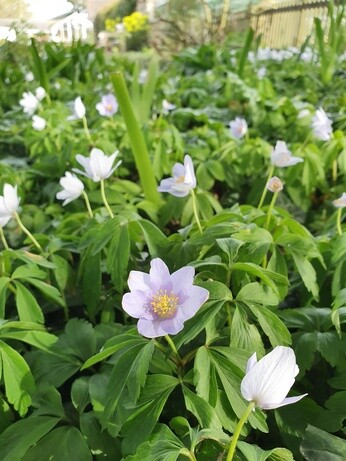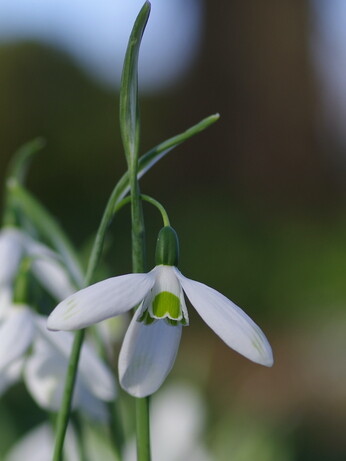Find out what the propagation and garden teams have been up to this week.

Potted dwarf bulbs and why we prefer to plant bulbs in the Spring

Although autumn is the best time to buy and plant spring-flowering dry bulbs, from the usual such as daffodils, tulips and crocus, to the less common and slightly trickier to establish woodlanders such as trilliums and wood anemones, it’s not the ideal time for deciding exactly where to place them. Often there are unseen, established bulbs already in situ, or perhaps there are early shooting perennials close by that will hide any newly planted bulbs.
Most bulbs need to be planted promptly as they will need to put on maximum root growth before shoots emerge in the spring. Rather than guessing where in the garden to plant them and finding out come the spring that you guessed wrongly, why not try the following simple but effective way of overcoming this problem.

Pot up the bulbs in autumn

By spring, the bulbs will be shooting

Place out and plant the bulbs where needed
Simply by potting 3 or 5 bulbs up into a 9cm pot or 1-2 litre pot for larger bulbs, using a general potting compost in the autumn will allow them to grow and establish over the winter ready to plant out in situ come the spring when its far easier to see exactly where they are needed. The bulbs should be potted if possible during September, although tulips can be left until November. Most bulbs, once potted can be stood outside in a cool place and left to root overwinter. Planting can be done as the bulbs come into flower come the spring.
Another advantage of having a pot full of established bulbs to plant out in the spring is that you will have ready-made clumps for instant impact, instead of individual bulbs scattered over an area which can lead to a rather spotty appearance. Bulbs always look best in drifts rather than in blocks, or evenly spaced so bear this in mind when placing out the pots.
The cheery January flowering winter aconite, Eranthis hyemalis and the later flowering wood anemone, Anemone nemorosa ‘Robinsoniana’ are two tuberous (or technically rhizomes in the case of the anemone) woodland plants that do not like to be dried out in their dormant state. It’s always best to buy such plants established and growing in pots during the spring to avoid disappointment.
Anemone nemorosa ‘Robinsoniana’
Many people find some bulbs difficult to grow when buying them dried. Notably winter aconites, snowdrops, wood anemones. These bulbs do not like the traditional method of being lifted, dried and then prepacked or stored loose for sale. Although the success rate of such bulbs, especially winter aconites will improve remarkably if you soak them in water overnight, you will have far more success in buying these as established growing plants in the spring.
Although most garden centres will have a small range of potted bulbs to purchase in the spring, a wider, more unusual range can be found on our nursery and on our website.




COMMENTS